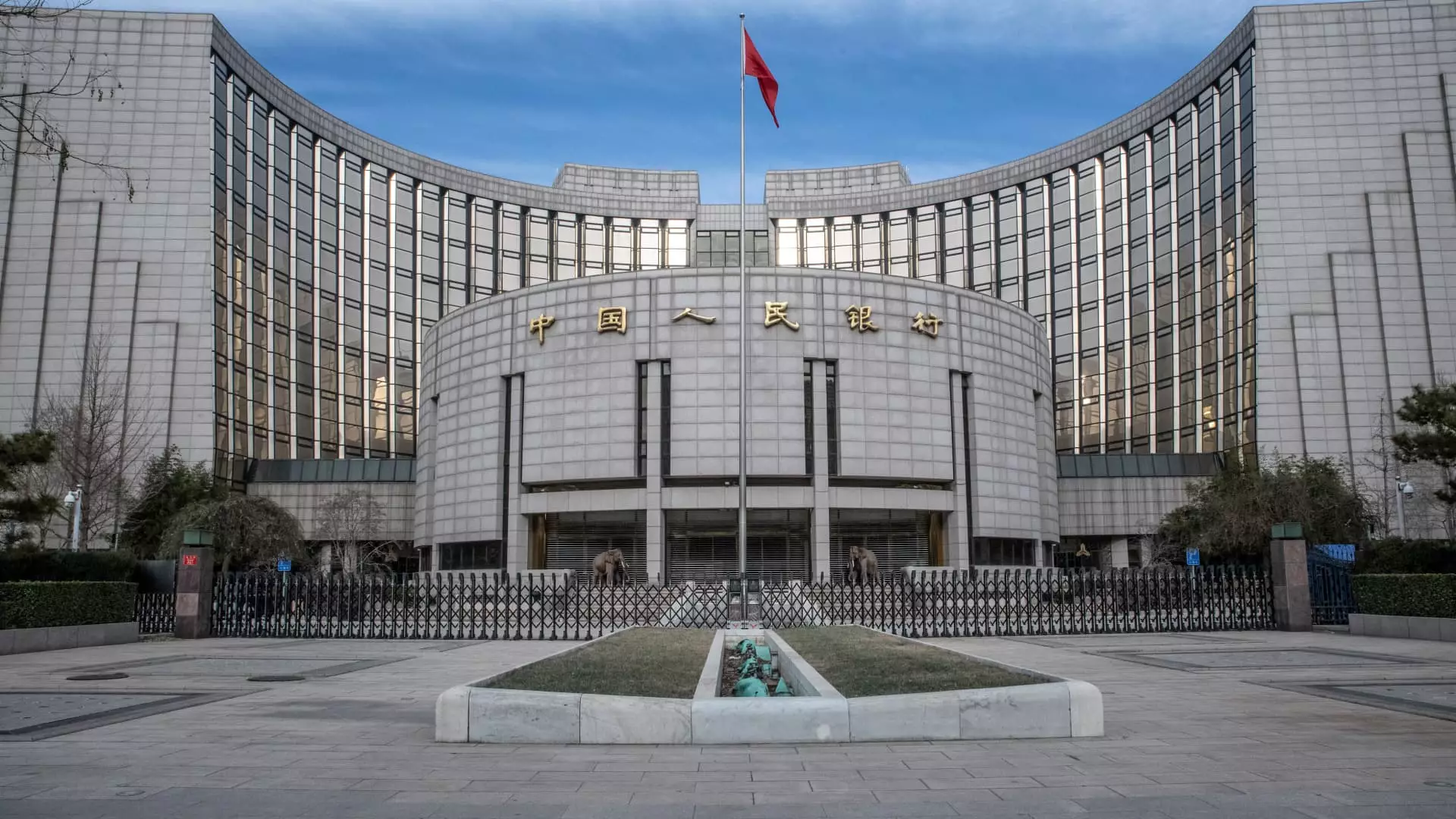On Wednesday, China’s central bank, the People’s Bank of China (PBOC), made a noteworthy announcement by keeping its benchmark lending rates steady. Specifically, the 1-year loan prime rate has been maintained at 3.1%, while the five-year loan prime rate continues to hold at 3.6%. This decision comes as Beijing reflects on the efficacy of its recent stimulus measures. Market experts, as noted in a Reuters poll, had anticipated this outcome, highlighting a consensus that the current rates are expected to remain unchanged for the foreseeable future.
The PBOC’s decision appears to be a cautious approach, driven primarily by the ongoing assessment of the recent stimulus rolls aimed at revitalizing a sluggish economy. Bruce Pang, the chief economist and head of research for Greater China at JLL, proposed that there is “no immediate need to adjust the LPR this month.” This demonstrates the central bank’s hesitance to adjust rates prematurely while they gauge the results from previous economic interventions. It is important to recognize how this steadiness could reflect the policy makers’ cautious optimism in terms of ensuring stability in the financial system, especially when commercial banks are grappling with record-low net interest margins, which restrict their abilities to provide lower lending rates.
Furthermore, this unchanged lending rate follows a recent cut of 25 basis points for both the one-year and five-year LPRs, signaling a proactive attempt to inject some dynamism into the economy. However, the data released from October provides a sobering backdrop. The economy has illustrated a lackluster performance, with industrial production and fixed asset investment growth falling short of expectations. Compounding these concerns is the reported annual decline in real estate investment from January to October, further indicating the fragility of the market, especially amidst a prolonged property crisis that has dragged down economic performance.
Nonetheless, retail sales surprisingly outperformed expectations, witnessing a growth of 4.8% year-on-year. This indicates that certain sectors have begun to respond positively to recent measures aimed at boosting overall economic activity. It raises interesting questions about the efficacy of stimulus interventions and their targeted sectors. Is the stimulus selectively effective, or is it merely an early sign of recovery in an otherwise troubled economic environment?
The central bank’s actions were proceeded by significant governmental efforts aimed at enhancing economic stability. The Ministry of Finance introduced an extensive 10 trillion yuan ($1.4 trillion) fiscal package, specifically targeted to alleviate local government debt issues. This measure is indicative of a layered approach to the economic malaise plaguing different sectors. Governor Pan Gongsheng of PBOC also suggested that there remains room for further reductions in key policy rates, underscoring the belief that supportive monetary policy could help stimulate growth.
Despite this, forecasts from financial institutions like Morgan Stanley and Goldman Sachs highlight a cautious outlook for China’s economic trajectory. Morgan Stanley predicts a slowdown in growth to around 4% in the next two years due to a combination of a deflationary environment and escalating trade tensions. Goldman Sachs indicates a similar trend, projecting GDP growth to decelerate further to 4.5% by 2025, reflecting diminishing returns from ongoing policies.
In addition to internal challenges, external pressures loom large. The economic landscape in China is complicated by rising international trade tensions, particularly in light of Donald Trump’s recent electoral victory, which raises concerns about potential additional tariffs on Chinese exports. Such uncertainties may exacerbate the existing challenges exhibited within the economy and further impede growth prospects.
The PBOC’s decision to maintain lending rates holds significant implications for China’s economic landscape. While recent governmental initiatives demonstrate a commitment to revitalizing a struggling economy, the persistent challenges—ranging from stagnant growth metrics to external trade pressures—paint a complex picture. Analysts remain cautiously optimistic, yet the path forward seems riddled with uncertainty. The ongoing effectiveness of stimulus measures will be paramount in determining whether China can navigate these economic challenges successfully, or if it requires a more aggressive realignment of its monetary and fiscal strategies.


Leave a Reply